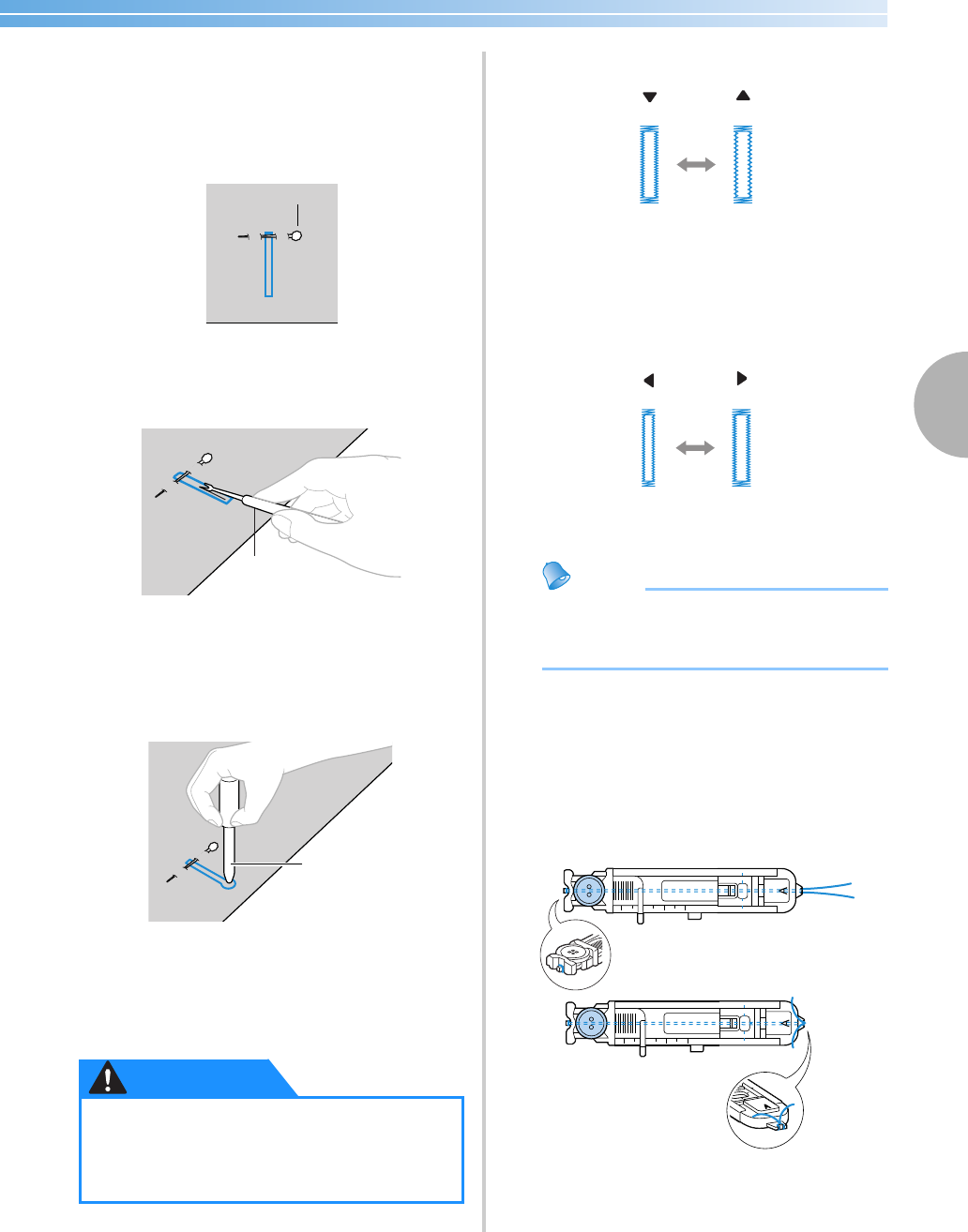
Buttonhole Stitching 81
3
9
Raise the buttonhole lever to its original
position.
0
Insert a pin along the inside of one bar tack at
the end of the buttonhole stitching to prevent
the stitching from being cut.
1 Pin
a
Use the seam ripper to cut towards the pin
and open the buttonhole.
1 Seam ripper
For keyhole buttonholes, use the eyelet punch
to make a hole in the rounded end of the
buttonhole, and then use the seam ripper to cut
open the buttonhole.
1 Eyelet punch
• When using the eyelet punch, place thick
paper or some other protective sheet under
the fabric before punching the hole in the
fabric.
■ Changing the density of the stitching
Adjust the stitch length.
• For details, refer to “Adjusting the stitch
length” (page 56).
• If the fabric does not feed (for example, if it is
too thick), increase the density of the
stitching.
■ Changing the stitch width
Adjust the stitch width.
• For details, refer to “Adjusting the stitch
width” (page 55).
Memo
● Before sewing buttonholes, check the stitch
length and width by sewing a trial
buttonhole on a scrap piece of fabric.
■ Sewing buttonholes on stretch fabrics
When sewing buttonholes on stretch fabrics, use a
gimp thread.
1
Hook the gimp thread onto the part of
buttonhole foot “A” shown in the illustration
so that it fits into the grooves, and then
loosely tie it.
●
When opening the buttonhole with the
seam ripper, do not place your hands in
the cutting direction, otherwise injuries
may result if the seam ripper slips.
1
1
1
CAUTION
–
+
–
+


















